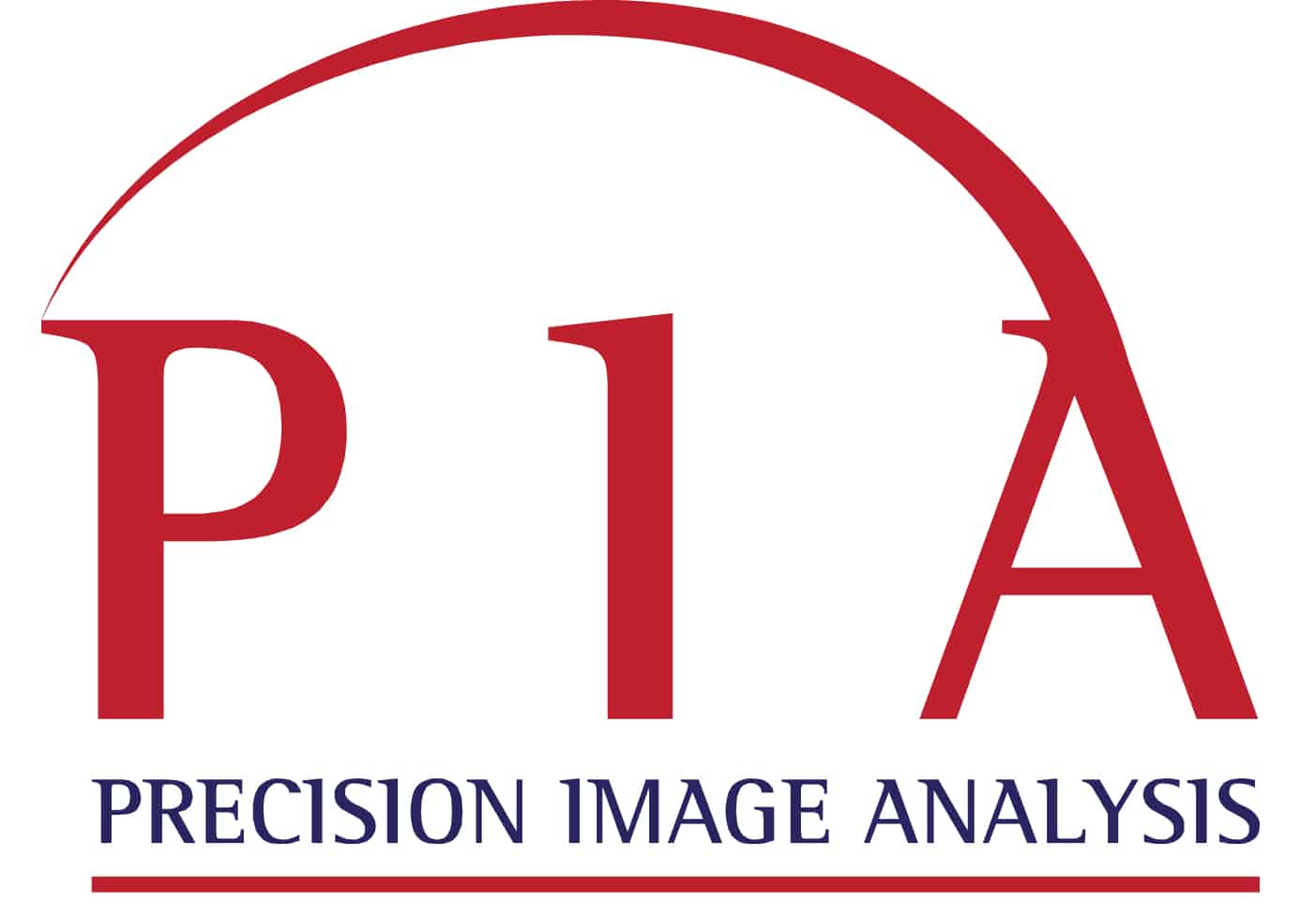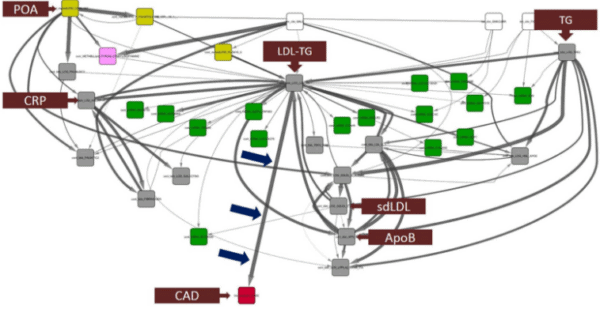|
LDL-TG’s Atherosclerosis Impact | Sad LAAO Science
February 27, 2023
|
|
|

|
|
Together with
|

|
|
|
“If such a paper can pass peer review at a prominent journal, how can a consumer of medical evidence have confidence in the adjudication of any paper? The implications are devastating.”
|
|
John Mandrola, MD after a “flawed” study with “biased” results made it onto Circulation.
|
|

|
|
Out of tens of thousands of blood-based molecules and biomarkers, triglyceride-rich LDL molecules (LDL-TG) emerged as a direct cause of atherosclerotic coronary artery disease (ASCAD).
LDL-C and Apo-B are widely known CVD risk factors, but it’s still unclear which specific risk factors underlie atherosclerosis, and to what extent. To investigate this, the authors applied a hypothesis-free Bayesian network analysis and genetic studies to 665 patients with suspected CAD.
The authors assessed simultaneous associations between genotypes, gene expression levels, circulating biomarkers, and CT-based atherosclerosis levels, finding that…
- LDL-TG was directly upstream from atherosclerosis in the Bayesian analysis.
- LDL-TG was associated with atherosclerosis independent of well-known factors like age, sex, LDL-C and ApoB levels.
- Genetic variations that “turned off” the hepatic lipase gene correlated with LDL-TG levels and atherosclerosis.
- LDL-TG was positively linked to triglycerides, sd-LDL, and inflammatory markers.
What’s new? These findings are consistent with previous literature, but also reveal that LDL-TG has a central causal role in ASCAD, potentially as a result of abnormal hepatic lipase activity.
The Takeaway
The study suggests that triglyceride-rich LDL particles directly cause atherosclerotic CAD. With the recent introduction of a simple and fully automated method to measure LDL-TG levels, this biomarker may become an important tool in the clinical assessment of atherosclerosis.
The analysis also showcases a promising new approach to evaluate genetic predisposition to ASCAD, and demonstrates how big “omics” data combined with AI has the potential to reveal novel treatment avenues.
|




|
|
Making the Leap to Outsource Post-Processing
Interested in how to outsource cardiac image post-processing, but not sure where to start? PIA walks you through how to assess and compare vendors, understand pricing models and payment options, and outline your requirements to identify vendors who meet your clinical needs.
|
|
Evolving Coronary Disease Imaging Pathways
HeartFlow’s PRECISE trial showed that their precision approach for evaluating stable chest pain avoids unnecessary testing and improves care – without risking missed heart disease diagnoses. In this Cardiac Wire Show, HeartFlow’s Chief Medical Officer Dr. Campbell Rogers dives into the PRECISE trial results and its implications for clinical practice.
|
|
- Flawed Analysis, Severe Sadness: A scorching new John Mandrola, MD post expressed his “severe sadness” about the state of medical science after Circulation published a study suggested that elderly patients with AFib have lower risks of future events following LAAO procedures compared to receiving anticoagulant treatments. Dr. Mandrola detailed a long list of problems with the study (non-randomized & retrospective, biased, illogical outcomes, contradictions w/ previous research), but seemed most troubled by the fact that the industry-funded authors encouraged physicians to implement these findings – and that Circulation published it.
- Eko Launches SENSORA Murmur Detection: Digital stethoscope startup Eko is bringing advanced non-invasive heart disease detection to primary care with the launch of its FDA-cleared SENSORA Cardiac Disease Detection Platform. SENSORA uses AI to identify structural murmurs during routine physical exams then provides downstream visibility into the patients’ care journey through integration with Eko’s new Care Pathway Analytics software.
- PCI & CABG Events and Downstream Mortality: A new JACC study revealed that patients who experience nonfatal major adverse events (MAEs) during or following PCI and CABG procedures have higher future mortality risks. Analysis of 1.8k randomized patients who either underwent PCI or CABG, showed that the rate of periprocedural MAEs was much higher in the surgical arm (11.9% vs. 45.4%), reflecting CABG surgery’s greater up-front risks. Experiencing an MAE strongly and independently predicted 5-year mortality after both PCI (odds ratio: 4.61) and CABG (OR: 3.25).
- BWH Adopts Us2.ai: Brigham and Women’s Hospital is adopting Us2.ai’s echocardiography AI software, with the goal of improving the speed and scalability of its Cardiac Imaging Core Laboratory’s echo-related research projects. BWH cited their previous research showing that Us2.ai’s echo measurements are comparable to those from human sonographers, while suggesting that Us2.ai’s ability to reduce echo interpretations from 30 minutes to under 2 minutes will allow the lab to “get novel therapies to patients faster.”
- CVRx’s Postmarket Miss: Preliminary results from CVRx’s Barostim post-market trial revealed that the heart failure treatment missed its primary endpoints (CV mortality + HF morbidity), but might still be effective. The BeAT-HF trial randomized 323 HFrEF patients to either receive treatment with Barostim and guideline therapy, or only receive the guideline therapy. Although Barostim didn’t achieve its primary endpoints with statistical significance, the trial had a number of favorable outcomes and showed that the evidence used in Barostim’s FDA premarket approval persisted through 24 months (safety and symptomatic improvement, originally 6mo).
- Hospital CEO Top Concerns: A survey of 281 hospital CEOs revealed that workforce challenges were their top concern for the second year in a row, beating out financial challenges and behavioral health issues. Financial challenges previously ranked as the top concern for 16 consecutive years before workforce woes took over, but CEOs are now battling shortages of registered nurses (90%), shortages of technicians (83%), and burnout among non-physician staff (80%).
- AliveCor Patent Ruling Upheld: The Apple v. AliveCor saga continued last week after a presidential review upheld the ITC’s ruling that the Apple Watch infringed three AliveCor patents related to ECG tech. That means a potential import ban on the Apple Watch is still on the table, although the US Patent Trial and Appeal Board recently ruled in Apple’s favor on the same three patents. Another round of appeals is now underway, and AliveCor is doubling down on the face-off with an antitrust trial slated to begin next year.
- COVID Cardiac Events: A new JACC study (n = 8,460) found that 11% of adults hospitalized with COVID-19 experienced acute cardiac events, with much higher prevalence among those with underlying cardiac disease (23% vs. 6%). Hospitalized COVID patients who experienced at least one acute cardiac event had greater risks of ICU admission and in-hospital death (ARRs: 1.9 & 1.7).
- Medtronic’s Aurora Gains CE Mark: Medtronic announced the CE Mark approval of its Aurora extravascular defibrillator system, while highlighting the Aurora’s list of advantages that aren’t available with subcutaneous ICDs (antitachycardia pacing, pause prevention pacing, and Medtronic’s PhysioCurve design). The approval follows the results of a NEJM study establishing the system’s safety and effectiveness.
- CCTA Radiomics Plaque Predictions: A new study out of China showed that CCTA-based radiomic signatures of coronary plaque can identify vulnerable plaques associated with higher future risks of adverse cardiac events. The researchers developed and validated the radiomic signature using two CCTA datasets (225 & 708 patients), detecting vulnerable plaques in an external dataset with “moderate to good” performance (AUC: 0.77), and showing that a high radiomic signature (≥ 1.07) was independently linked to MACE over 3-years (HR: 2.01).
- Veradigm + HealthVerity: Veradigm signed an agreement to supply data from its Cardiovascular and Metabolic registries to the HealthVerity Marketplace, an ecosystem for exchanging real-world data for use in clinical trials. Researchers using Marketplace will be able to access deidentified patient data from the Veradigm registries (102M Cardiology records, 79M Metabolic records) to help develop novel treatments for cardiac and metabolic conditions.
|
|
Transformation Through Structured Reporting
Ready to realize the benefits of cardiovascular imaging structured reporting? Check out these quick and powerful Change Healthcare videos detailing the efficiency gains provided by structured reporting and what it takes to drive adoption.
|
|
Making Echo Accurate, Efficient, and Accessible
Check out this Imaging Wire Show featuring Us2.ai’s co-founders – James Hare and Dr. Carolyn Lam – for a great discussion about Us2.ai’s continued clinical and commercial expansion, and their efforts to improve echocardiography accuracy, efficiency, and accessibility.
|
|
Staging Coronary Artery Disease
Believe it or not, there’s been no clinically relevant atherosclerosis staging system used to characterize heart disease — until now. Check out Cleerly’s four-stage system for evaluating atherosclerotic plaque burden, which is the direct cause of coronary artery disease (CAD).
|
|
|
|
|